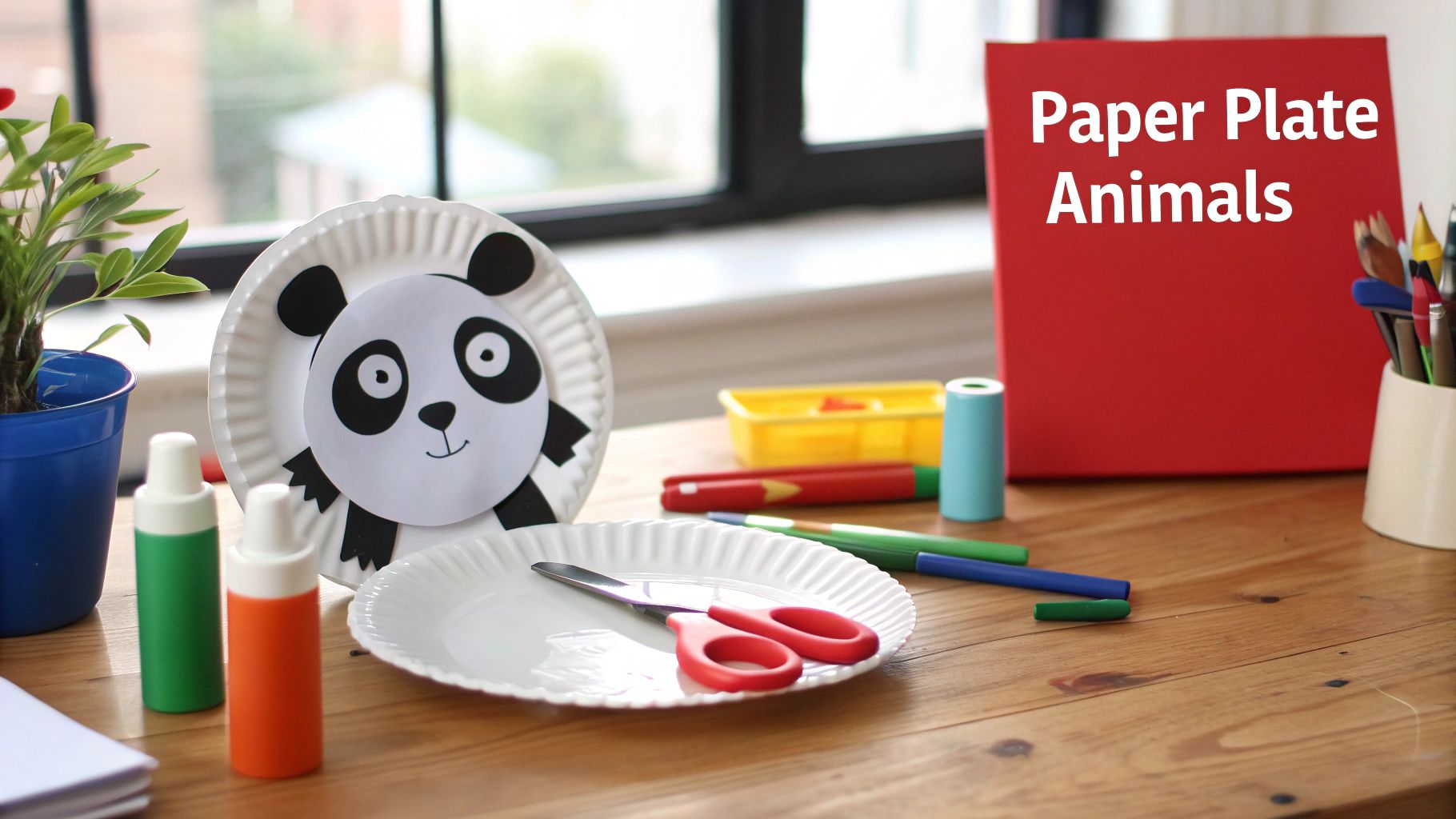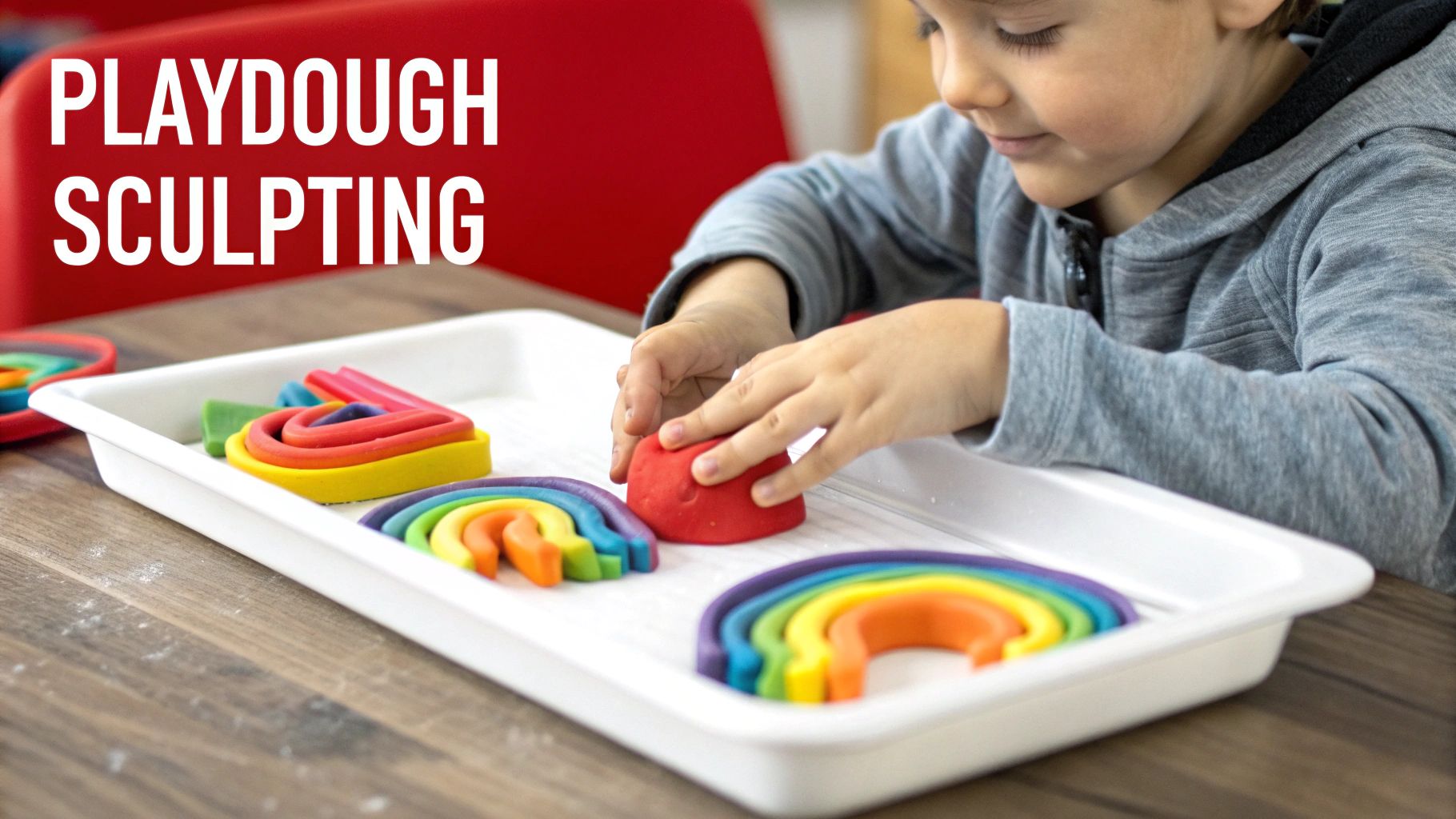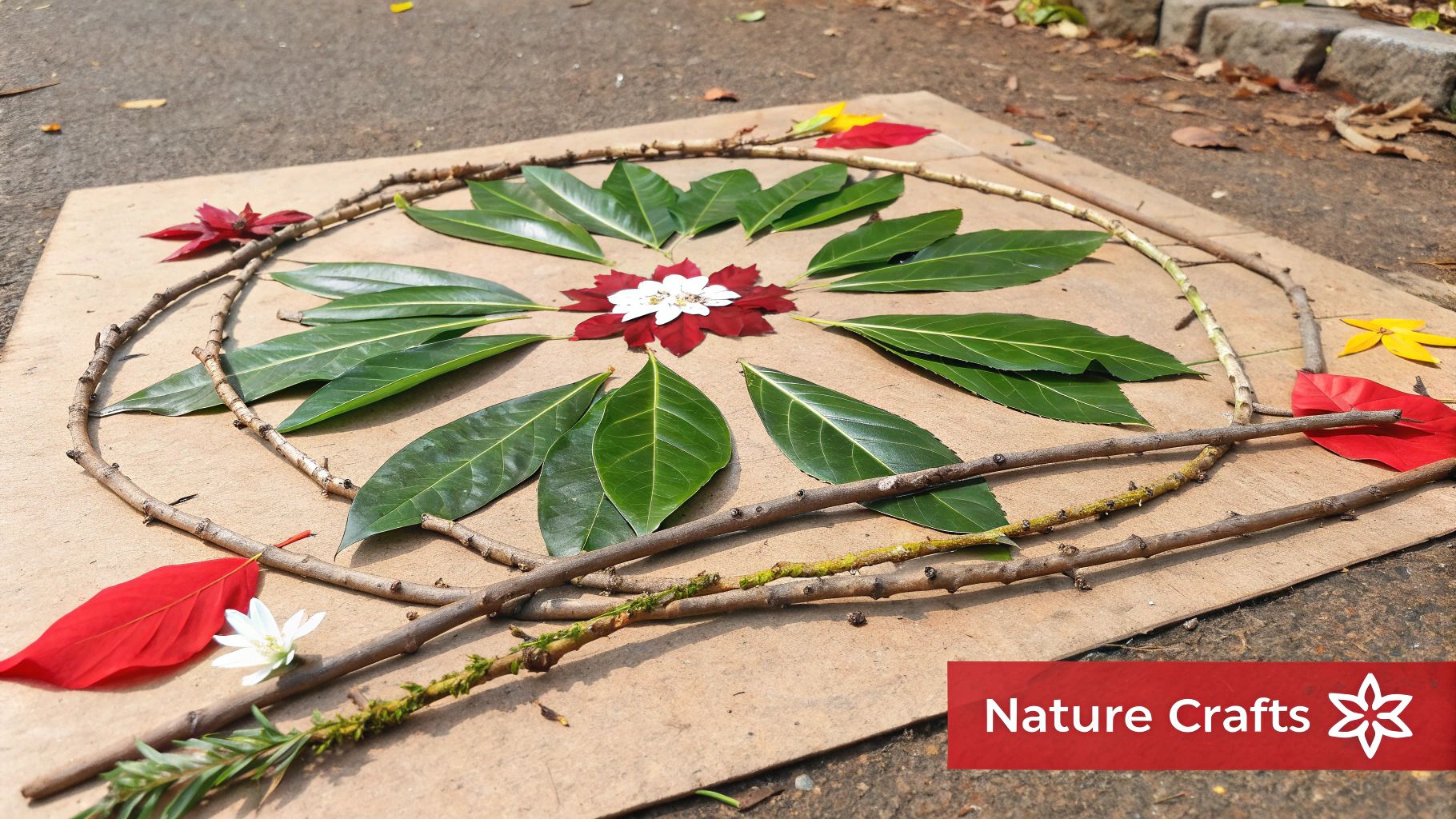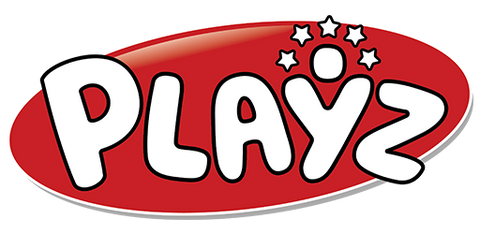
10 Creative Crafts for Preschoolers to Spark Joy (2025)
Welcome to the colorful world of preschool crafting! In an age filled with digital distractions, nurturing a child's creativity through hands-on activities is more vital than ever. The creative crafts for preschoolers featured here are far more than just ways to make cute keepsakes; they are foundational experiences that build crucial developmental skills. Each project is a playful exercise in strengthening fine motor control, fostering early problem-solving abilities, and giving young children a powerful medium for self-expression and communication.
This guide is designed for busy parents and dedicated educators looking for meaningful, engaging, and developmentally appropriate projects. We've curated a list that turns simple, everyday materials into extraordinary windows of discovery and learning. These activities are designed to be accessible and manageable, minimizing prep time while maximizing the developmental benefits.
You'll find 10 fantastic craft ideas that promise less mess, more fun, and a whole lot of learning. From transforming paper plates into whimsical animals to exploring textures with collage art, each craft provides a unique opportunity to engage your preschooler's imagination. Get ready to dive into a collection of projects that champion the idea that children learn best through play, helping you spark a lifelong love for creating.
1. Paper Plate Animals
Transforming a simple paper plate into a vibrant animal is a classic for a reason. This activity is one of the most accessible and effective creative crafts for preschoolers, requiring minimal supplies while offering huge developmental benefits. Children use paint, markers, construction paper, and other household items to create their favorite creatures, turning a basic circle into a canvas for their imagination.

This craft is fantastic for reinforcing lessons. For example, a classroom studying zoo animals could make lions with yarn manes and yellow paint. An ocean unit comes to life with colorful fish adorned with sparkly tissue paper scales. This hands-on approach helps solidify concepts like animal recognition and habitats.
How to Get Started
- Materials Needed: Heavy-duty paper plates, washable paint or markers, construction paper, child-safe scissors, glue sticks, and optional add-ons like feathers, yarn, or googly eyes.
- Best For: Developing fine motor skills through cutting and gluing, encouraging creativity, and supplementing themed educational units.
- Pro-Tip: Pre-cutting more complex shapes like ears or fins can help younger children stay engaged. For group activities, creating simple templates ensures everyone can participate successfully.
Letting the painted plates dry completely before adding details is key to a clean finish. Once complete, these creations can be used as puppets or masks, extending the activity into imaginative play. For more ideas on how different toys and crafts can foster creativity, you can explore the best toys for imaginative play and see how these simple projects fit into a larger developmental picture.
2. Handprint and Footprint Art
This beloved craft turns a child's own hands and feet into the primary tool, creating a sentimental snapshot in time. Handprint and footprint art uses non-toxic paint to make impressions on paper, which are then transformed with a few extra details into animals, flowers, and keepsakes. It’s a beautifully simple way to combine sensory play with a creative outlet, resulting in a piece of art that is uniquely personal.
This method is incredibly versatile for marking holidays and milestones. A classic Thanksgiving activity involves turning handprints into colorful turkeys, while footprint reindeer make charming Christmas cards. For Mother's Day, a bouquet of handprint flowers becomes a cherished gift. This makes it one of the most heartwarming creative crafts for preschoolers, capturing their rapid growth in a fun, tangible way.
How to Get Started
- Materials Needed: Washable, non-toxic paint, sturdy paper or canvas, a paintbrush or sponge for applying paint, wet wipes for easy cleanup, and markers for adding details.
- Best For: Creating personalized keepsakes, celebrating seasonal holidays, and engaging in sensory play that connects a child to their artwork.
- Pro-Tip: Apply paint with a brush or sponge rather than dipping hands directly into a tray. This ensures an even coat, prevents mess, and uses less paint. Always have wet wipes and towels ready before you even begin.
Remember to date every creation to track your child's growth over the years. Once dry, these prints can be framed or added to a memory book. The process itself is a valuable sensory experience, and the final product is a treasure for families.
3. Playdough Sculpting
Playdough sculpting is a foundational preschool activity that goes far beyond simple fun. Children manipulate the soft, moldable dough to create shapes, objects, and imaginative figures. This classic is one of the most effective creative crafts for preschoolers because it strengthens hand muscles crucial for writing readiness while simultaneously promoting creativity and three-dimensional thinking.

This sensory craft is incredibly versatile and adaptable to different educational philosophies. For instance, Montessori classrooms use playdough for tactile letter and number formation, while many Reggio Emilia-inspired programs encourage combining it with natural materials like stones and shells. The hands-on nature of sculpting helps solidify abstract concepts in a tangible way.
How to Get Started
- Materials Needed: Commercial or homemade playdough, a smooth work surface (like a mat or tray), and optional tools like cookie cutters, stamps, child-safe scissors, or rolling pins.
- Best For: Strengthening fine motor skills, promoting sensory exploration, teaching color theory through mixing, and encouraging open-ended, imaginative play.
- Pro-Tip: Create themed playdough kits to spark new ideas, such as a "bakery" kit with small rolling pins and cupcake liners. Adding a few drops of lavender or chamomile essential oil can also introduce a calming aromatherapy element to the activity.
To extend the educational value, encourage children to mix colors and observe the results. This simple act introduces basic color theory concepts in an engaging, memorable way. To find more activities that blend fun with education, you can discover more about the best learning toys for preschoolers and see how playdough complements other developmental tools.
4. Collage Creation
Collage creation is a wonderfully open-ended activity that involves combining various materials like paper, fabric, and natural items onto a single surface. This process is one of the most versatile creative crafts for preschoolers because it encourages decision-making and planning. Children explore textures and colors as they tear, cut, and glue, transforming a collection of odds and ends into a multi-dimensional piece of art.

This craft easily adapts to educational themes. An "All About Me" project can use pictures from magazines that represent a child's favorite things. A nature-themed collage is perfect for an outdoor education unit, using collected leaves, twigs, and flower petals. The technique, popularized by authors like Eric Carle, is excellent for connecting literacy and art.
How to Get Started
- Materials Needed: A sturdy base (cardboard or heavy paper), glue sticks or liquid school glue, child-safe scissors, and a variety of materials like colored paper, magazine clippings, fabric scraps, leaves, and buttons.
- Best For: Developing fine motor skills through tearing and gluing, fostering sensory exploration, and encouraging self-expression and creative storytelling.
- Pro-Tip: Offer a curated selection of materials in separate containers to avoid overwhelming younger children. Encourage preschoolers to arrange their pieces on the paper before gluing them down to practice planning and composition.
Displaying the finished collages at the child's eye level builds a sense of pride and accomplishment. For more engaging projects, you can find a variety of great indoor activities for kids that also promote creativity and keep little hands busy.
5. Painting with Unconventional Tools
Moving beyond traditional brushes opens up a world of texture, pattern, and discovery. Painting with unconventional tools is a process-focused craft that encourages preschoolers to see creative potential in everyday objects. Children can use sponges, toy cars, bubble wrap, and even vegetables to apply paint, turning the art session into an exciting sensory experiment.
This craft is an excellent way to introduce new concepts in a playful manner. For instance, fork painting can create the perfect grassy texture for a landscape, while potato stamps are a classic way to explore repeated patterns. This hands-on approach builds a child’s understanding of cause and effect as they see how different objects create unique marks, making it one of the most dynamic creative crafts for preschoolers.
How to Get Started
- Materials Needed: Washable paint in shallow trays, sturdy paper, and a collection of "tools" like bubble wrap, pinecones, forks, cotton swabs, or small toy wheels.
- Best For: Encouraging sensory exploration, teaching cause and effect, and developing problem-solving skills as children experiment with different tools.
- Pro-Tip: Use a slightly thicker paint, like tempera, to get clearer impressions from the objects. Before starting, create a small chart showing the tool and the mark it makes to spark ideas and discussion.
Clean any reusable tools immediately after the session to keep them ready for future projects. This activity is not just about the final product but the joy of exploration itself. To discover more ways to blend art with learning, you can find a variety of creative learning activities for preschoolers that expand on these hands-on principles.
6. Nature Crafts and Outdoor Art
Bringing the outdoors in, nature crafts connect children directly with their environment by using found materials like leaves, sticks, rocks, and flowers. This approach is one of the most organic creative crafts for preschoolers, transforming a simple walk into a treasure hunt and fostering a deep appreciation for the natural world. Children can create unique, textured art that changes with the seasons.
This craft is exceptionally versatile and supports environmental education. For example, a fall lesson on trees can be enhanced with leaf rubbings that reveal unique vein patterns. A spring activity could involve creating pressed flower bookmarks, while a summer kindness project might include painting rocks with positive messages to leave in a local park. This hands-on connection makes learning about seasons, textures, and ecosystems memorable.
How to Get Started
- Materials Needed: Collected natural items (leaves, sticks, rocks, flowers, seeds), craft glue or Mod Podge, paper or cardboard, and optional add-ons like twine, paint, and clay.
- Best For: Developing observation skills, fostering environmental awareness, and encouraging creativity with sustainable, no-cost materials.
- Pro-Tip: Supervise children to ensure they only collect non-toxic plants and handle materials safely. Teach them "leave no trace" principles, like taking only what has already fallen to the ground.
Create a dedicated "nature table" in your home or classroom to display a rotating collection of seasonal finds. For ephemeral art created outdoors, like a nature mandala, be sure to take a photograph to preserve the memory. For more ideas on how to integrate nature-based learning into play, you can get inspiration from the NurtureStore blog, a great resource for creative and educational activities.
7. Simple Weaving and Threading
Weaving and threading activities are fantastic creative crafts for preschoolers that build concentration and precision. This craft involves guiding materials like yarn, ribbon, or laces through holes or around objects, following a simple over-under pattern. It’s a quiet, focused activity that produces beautiful, tangible results, from colorful pasta necklaces to intricate woven placemats.
These hands-on projects are exceptional for strengthening fine motor skills and hand-eye coordination, which are foundational for writing readiness. For example, a child threading large wooden beads onto a shoelace is practicing the pincer grasp and bilateral coordination. Similarly, weaving colorful yarn on a simple cardboard loom introduces early patterning concepts, a key component of math readiness.
How to Get Started
- Materials Needed: Cardboard looms (a piece of cardboard with notches cut into the sides), chunky yarn in various colors, large plastic needles, lacing cards, or uncooked rigatoni or penne pasta and string.
- Best For: Developing fine motor precision, improving hand-eye coordination, building focus and patience, and introducing basic math concepts like patterning.
- Pro-Tip: Make threading easier for little hands by stiffening the end of the yarn with a small piece of tape or a dab of glue. Start with large holes and thick, sturdy materials to prevent frustration and build confidence.
Demonstrating the over-under technique slowly and repeatedly is crucial. The tactile nature of this craft makes it highly engaging, and the repetitive motion can have a calming, meditative effect on young children. To see how these types of focused, hands-on activities contribute to broader educational goals, you can find a wealth of resources at the National Association for the Education of Young Children (NAEYC).
8. Sensory Bottles and Jars
Sensory bottles are captivating, self-contained worlds in a jar, making them one of the most versatile creative crafts for preschoolers. These sealed containers are filled with liquids and various materials like glitter, beads, and small toys that swirl and float when shaken. They serve as powerful tools for calming, discovery, and quiet-time engagement, offering a mesmerizing visual experience.
This craft is incredibly adaptable for learning. A science unit on weather could feature a "rainstorm" bottle with blue water and silver glitter. For literacy, an "I-Spy" bottle filled with rice and tiny alphabet letters encourages letter recognition. These discovery bottles provide a mess-free way for children to explore concepts, making abstract ideas tangible and fascinating.
How to Get Started
- Materials Needed: Clear plastic bottles or jars, water, clear glue or corn syrup (to slow the flow), glitter, food coloring, and small items like beads, buttons, or tiny plastic figures. Strong glue (like hot glue) to seal the lid.
- Best For: Promoting emotional regulation, developing scientific observation skills, and providing a focused, quiet activity.
- Pro-Tip: For the best "calm-down" effect, add clear glue or light corn syrup to the water. This thickens the liquid, causing glitter and objects to float and fall slowly, which is visually soothing. Always use a strong adhesive to permanently seal the lid for safety.
Once created, these bottles become valuable resources in a calm-down corner or a science center. They offer a simple yet effective way to engage a child's senses and focus their attention. To discover more ways to stimulate learning through touch and sight, you can find a wealth of ideas about the benefits of sensory play and see how these bottles fit into a broader sensory-rich environment.
9. Stamping and Printing
Stamping and printing crafts offer a magical moment of reveal as preschoolers lift an object to see the image left behind. This activity introduces the core concepts of printmaking and pattern creation using everyday items dipped in paint. From classic potato stamps to dedicated craft sets, this technique is one of the most versatile creative crafts for preschoolers, allowing them to explore cause and effect with satisfying results.
This craft is incredibly effective for reinforcing educational concepts. For a fall science unit, children can make leaf prints to learn about different tree species. In a math center, foam shape stamps can be used to create and replicate geometric patterns, introducing early math skills in a hands-on, visual way. Even simple fingerprint art becomes a lesson in unique identity and fine motor control.
How to Get Started
- Materials Needed: Washable paint or ink pads, paper or fabric, and various objects for stamping (e.g., potatoes, sponges, cookie cutters, leaves, or store-bought stamps).
- Best For: Introducing pattern recognition, strengthening hand-eye coordination, and providing a sensory-rich art experience.
- Pro-Tip: Use a thick, but not goopy, paint for the clearest impressions. Patting the stamp gently onto the ink pad or painted plate, rather than rocking it, ensures an even and complete transfer of the image.
For a clean project, have a separate area for inking the stamps and another for printing. Cleaning stamps between colors is essential to prevent muddy results. This activity can be extended by making custom stamps from craft foam glued to wooden blocks or by using the end of a celery stalk to create beautiful rose-like prints, turning a simple snack into an art tool.
10. Tear and Scrunch Art
This craft taps into a preschooler’s natural desire to explore textures and use their hands. Tear and scrunch art is a wonderfully sensory activity where children rip paper into pieces and then crumple or roll it into balls to create textured, three-dimensional artwork. It is one of the most effective creative crafts for preschoolers who are still developing the dexterity needed for scissors, as it builds essential hand and finger strength.
This process-focused art form is fantastic for bringing thematic lessons to life. A spring unit can feature vibrant flowers made from scrunched-up tissue paper, while a fall theme can be explored by creating textured tree bark with torn brown paper bags. The technique is a cornerstone of process-art philosophies like the Reggio Emilia approach, which values the creative journey over the final product.
How to Get Started
- Materials Needed: Various types of paper (construction paper, tissue paper, newspaper, magazines), a sturdy base like cardstock or a paper plate, and a glue stick or liquid glue.
- Best For: Building fine motor skills, developing hand-eye coordination, providing a satisfying sensory experience, and encouraging creative expression without the pressure of precision.
- Pro-Tip: For younger children, provide paper with pre-scored lines to guide their tearing. Demonstrating how to tear the paper toward their body can give them better control and prevent frustration, ensuring the activity remains positive and engaging.
Once the scrunched pieces are glued down, the artwork gains a unique, bumpy texture that kids love to touch. Keep a "scrap basket" filled with different papers readily available, so this activity can be a spontaneous option for creative exploration anytime. The simple actions of tearing and scrunching are powerful preparation for future writing skills.
Creative Crafts for Preschoolers: 10-Activity Comparison
| Activity | Implementation Complexity 🔄 | Resource Requirements ⚡ | Expected Outcomes 📊 | Ideal Use Cases 💡 | Key Advantages ⭐ |
|---|---|---|---|---|---|
| Paper Plate Animals | Low - simple cutting, painting, gluing | Basic, inexpensive craft supplies (paper plates, paint, glue) | Fine motor skills, creativity, animal recognition | Preschool creative time, themed animal units | Budget-friendly, easy prep, adaptable, supports creativity |
| Handprint and Footprint Art | Very low - paint application and stamping | Washable paint, paper or canvas, wipes | Keepsakes, sensory experience, body awareness | Memory keepsakes, seasonal/holiday crafts | Documents growth, tactile engagement, no art skill required |
| Playdough Sculpting | Medium - preparing dough, molding shapes | Playdough (commercial or homemade), tools (rollers, cutters) | Fine motor strength, creativity, pre-writing muscle development | Extended play, therapy, imaginative activities | Reusable, sensory-rich, supports hand strength and creativity |
| Collage Creation | Medium - material collection, cutting, gluing | Varied materials (paper, fabric, natural objects, glue) | Decision-making, fine motor, spatial awareness | Open-ended art, thematic projects | Inclusive, encourages planning, uses recyclable materials |
| Painting with Unconventional Tools | Medium - gathering tools, exploring techniques | Household/found objects, washable paint | Texture, pattern recognition, problem-solving | Experimentation, sensory art, motor development | High engagement, cost-effective, encourages discovery |
| Nature Crafts and Outdoor Art | Medium - material collection, supervised use | Natural items (leaves, sticks, flowers), glue | Environmental awareness, observation, sensory connection | Outdoor exploration, environmental education | Free materials, fosters stewardship, therapeutic benefits |
| Simple Weaving and Threading | Medium to high - threading, patterning tasks | Yarn, lacing cards, needles, beads, paper plates | Fine motor precision, hand-eye coordination, sequencing | Pre-writing prep, quiet activities, fine motor rehab | Builds concentration, adaptable, develops bilateral coordination |
| Sensory Bottles and Jars | Medium - assembling, sealing bottles | Clear bottles, glitter, liquids, small objects | Calming, visual stimulation, scientific concepts | Emotional regulation, STEM learning, special needs | Safe sensory tool, portable, teaches science concepts |
| Stamping and Printing | Low to medium - tool prep and stamping | Stamps (homemade/purchased), paint, paper/fabric | Pattern recognition, spatial planning, printmaking skills | Pattern lessons, art projects, holiday crafts | Easy cleanup, confidence-building, pattern creation |
| Tear and Scrunch Art | Very low - tearing and scrunching paper | Paper (construction, tissue), glue | Hand strength, sensory input, creativity | Very young children, sensory play | Safe, developmentally appropriate, tactile feedback |
Your Next Creative Adventure Awaits
We've journeyed through a vibrant landscape of creative possibilities, from the simple joy of transforming a paper plate into a roaring lion to the sensory delight of crafting with materials found right in your backyard. This collection of ten creative crafts for preschoolers is more than just a list of activities; it's a blueprint for developmental play that nurtures the whole child. By engaging in these hands-on projects, your preschooler is doing far more than making a mess or a masterpiece. They are building a powerful foundation for a lifetime of learning.
Key Takeaways: The True Value of Crafting
Remember the core takeaways from our exploration. Each activity, whether it's stamping with a potato or weaving yarn through a cardboard loom, is a multi-faceted learning experience. You are not just keeping little hands busy; you are actively supporting critical developmental milestones.
- Fine Motor Skills: Grasping a paintbrush, threading a bead, or tearing paper meticulously strengthens the small muscles in the hands and fingers, which are essential for future writing and self-care tasks.
- Cognitive Growth: Crafting encourages problem-solving, sequencing, and cause-and-effect thinking. When a child mixes blue and yellow paint to discover green, they are conducting their very own science experiment.
- Sensory Integration: Activities like playdough sculpting and creating sensory bottles provide vital input that helps children understand and process the world around them, improving focus and regulation.
- Emotional Expression: Art provides a safe and effective outlet for preschoolers to express complex feelings and ideas they may not have the words for yet. A scribbled, angry-looking collage can be as communicative as a temper tantrum, but far more constructive.
Actionable Steps for Your Crafting Journey
Moving forward, the goal is to integrate these ideas into your routine in a way that feels joyful, not forced. The most successful creative sessions are born from a spirit of exploration, not a demand for perfection.
Your mission, should you choose to accept it, is to focus on the process, not the product. Celebrate the splatters, the crooked lines, and the unconventional color choices. These are not mistakes; they are hallmarks of a brain hard at work, making new connections and building confidence. Let your child lead the way. If they want to paint with their fingers instead of the celery stalk you provided, embrace it. This autonomy is key to fostering a genuine, lasting love for creativity.
Ultimately, the most important supply you can bring to any art table is your own enthusiasm and encouragement. Your presence and positive reinforcement turn a simple craft into a cherished memory and a powerful learning moment. The time you spend creating together builds connection and shows your child that their ideas have value. These moments are the true masterpieces you are creating.
Ready to take play-based learning to the next level? The curiosity sparked by these creative crafts for preschoolers is the perfect launchpad for deeper scientific exploration. Playz designs award-winning science kits, creative toys, and play tents that transform your home into a laboratory of fun, making complex concepts accessible and exciting for young minds.
Visit our shop today and discover the perfect tools to fuel your little one’s imagination!
